Military orders and medals of the Soviet Union. Medals of the series “For the capture and release”
An inquisitive reader may wonder why various formulations were used to create these medals. Some were given medals for taking cities, others for liberation. On this account, you can make two assumptions. The first of these is that the enemy cities, that is, those of the European cities that were on the territory of Germany or its allies in the war, were taken by the Red Army (Berlin, Königsberg, Budapest and Vienna), and those that were occupied by Hitler’s troops - liberated (Belgrade, Warsaw, Prague). Fairly logical explanation.
According to the second version, the cities taken by the Soviet troops were captured exclusively by regular units of our army, as well as our allies as a result of large-scale military operations with stubborn resistance from the enemy. At the same time, the Red Army liberated the cities when local insurgent groups or the anti-fascist underground took part in this in one form or another. At the same time, all the liberated cities had not only military, but also serious political significance, and were especially important for the post-war structure of Europe. This version discards the territorial affiliation of cities to Germany or its allies in the war.
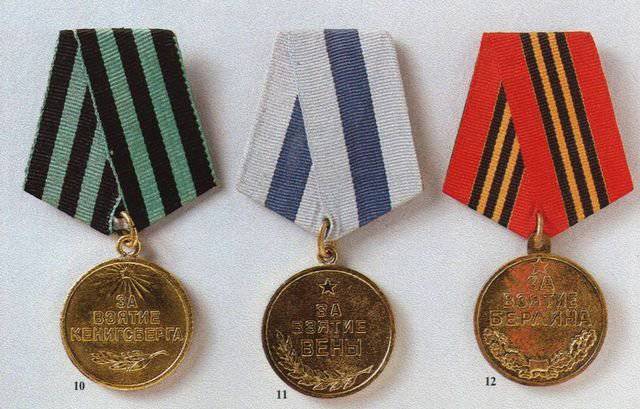
All medals of this series had the same size. They were made in the form of a circle with a diameter of 32 mm and were made of brass. By creating most of the medals in this series the artist A. I. Kuznetsov had a hand. It is worth noting that in the Soviet medal system all these medals were distinguished by simplicity of graphic design. The basis of each of them was the inscription "For the liberation" or "For the capture", which was located on the obverse. On the reverse of all the medals were the date of the capture or liberation of cities and a small five-pointed star. All the inscriptions and images on the medals were made convex. On the front side of the coin was bordered by a small side.
All medals of this series were awarded to soldiers and officers of the Red Army, the NKVD troops, as well as the Naval fleetwho took a direct part in the assault and the liberation of these cities, as well as took part in organizing and directing combat operations to capture and liberate them.
Medal "For the capture of Berlin"
In total, over the 1,1 of a million Soviet soldiers were presented to the medal “For the Capture of Berlin”. On the obverse in the center of the medal was the inscription "FOR THE TAKING OF BERLIN" (all capital letters). On the bottom edge there was an image of an oak half-woolen, which in the middle part was intertwined with tape. Above the inscription was a five-pointed star. On the reverse side was the date of the capture of the city - May 2 of the year 1945. The medal was attached to a standard pentagonal block. It was covered with a silk red ribbon 24 mm wide, in the middle of this ribbon 5 passed along the same width of the strips: 2 orange and 3 black.
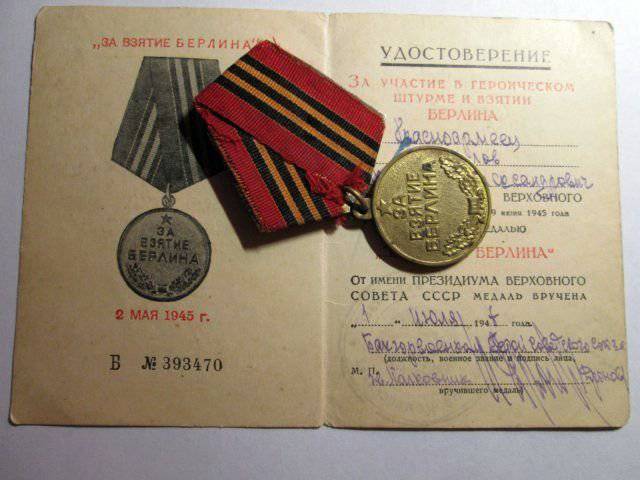
Medal "For the liberation of Belgrade"
In total, this combat medal was awarded to the order of 70 000 fighters and commanders of the Red Army. The inscription “FOR LIBERATION OF BELGRADE” (all capital letters) was placed on the front side in the center of the award, while the inscription “FOR LIBERATION” was located in a circle. Above this inscription there was a five-pointed star, along the circumference there was a laurel wreath. On the reverse side of the award was the date of the liberation of Belgrade - 20 October 1944 of the year. The medal was attached to a standard pentagonal block. It was covered with a silk green ribbon 24 mm wide, in the middle of this ribbon was a black stripe 8 mm wide.
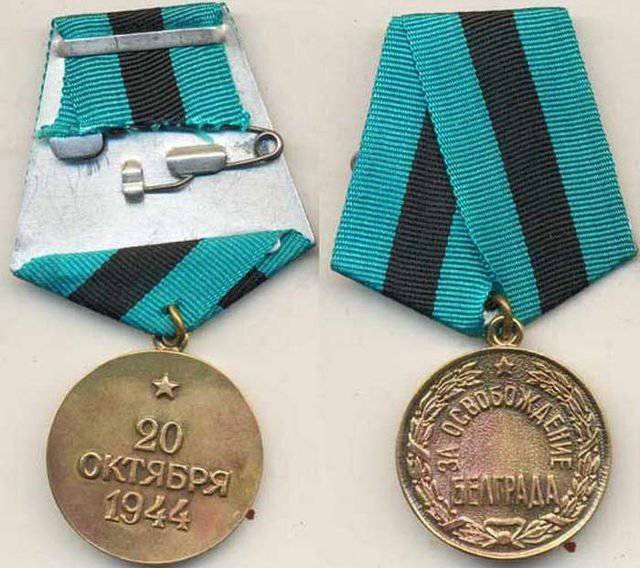
Medal "For the Capture of Budapest"
As of January 1, 1995, the medal “For the capture of Budapest” was awarded to the order of 362 050 people. On the obverse in the center of the award was the inscription "FOR THE TAKING OF BUDAPEST" (all capital letters). Above the inscription was a five-pointed star. Below was an image of a sickle and hammer, which was located in the center of two crossed laurel branches. On the reverse side of the coin was the date of the seizure of the capital of Hungary - February 13 1945. The medal was attached to a standard pentagonal block. It was covered with a silk orange ribbon 24 mm wide, in the middle of this ribbon was a blue strip 8 mm wide.
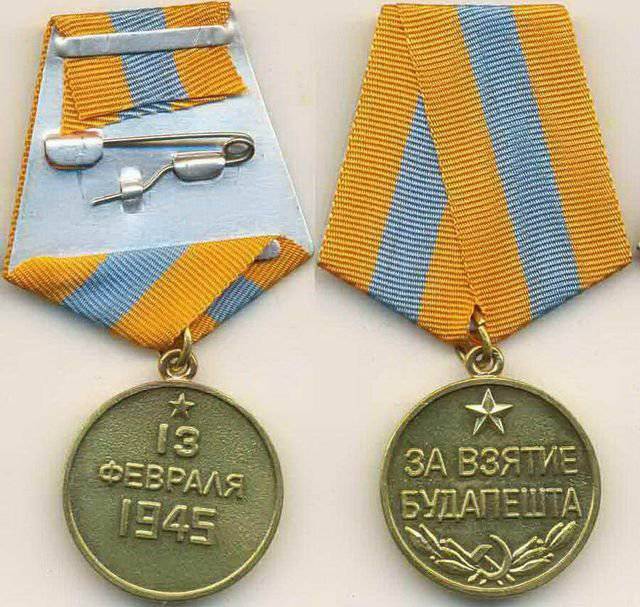
Medal "For the liberation of Warsaw"
As of January 1, 1995, the medal “For the liberation of Warsaw” was awarded to 701 700 fighters and commanders of the Red Army. The inscription “FOR LIBERATION OF WARSAW” (all capital letters) was located on the front side in the center of the award, while the inscription “FOR LIBERATION” was located on a circle, and the inscription “WARSAW” was horizontal, but on a separate ribbon. In the lower part there was a small five-pointed star with rays radiating from it. On the reverse side of the coin was the date of the capture of the capital of Poland - 17 January 1945. The medal was attached to a standard pentagonal block. It was covered with a silk blue ribbon 24 mm wide, in the middle of this ribbon was a red stripe 8 mm wide, the edges of the ribbon were bordered by small yellow stripes.
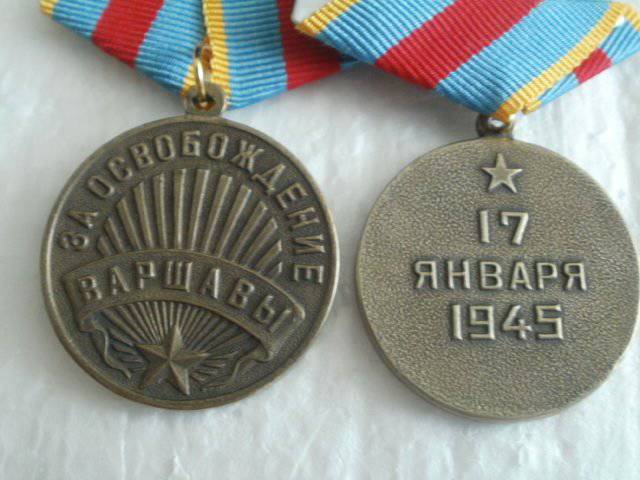
Medal "For the capture of Vienna"
As of January 1, 1995, the medal “For the capture of Vienna” was awarded the order of 277 380 fighters and commanders of the Red Army. On the obverse in the center of the award was the inscription "FOR TAKING VIENNA" (all capital letters), in the upper part above the inscription there was a small five-pointed star, in the lower part a laurel twig. On the reverse side of the medal was the date of the capture of the capital of Austria - 13 April 1945. The medal was attached to a standard pentagonal block. It was covered with a silk blue ribbon 24 mm wide, in the middle of this ribbon was a blue strip 8 mm wide.
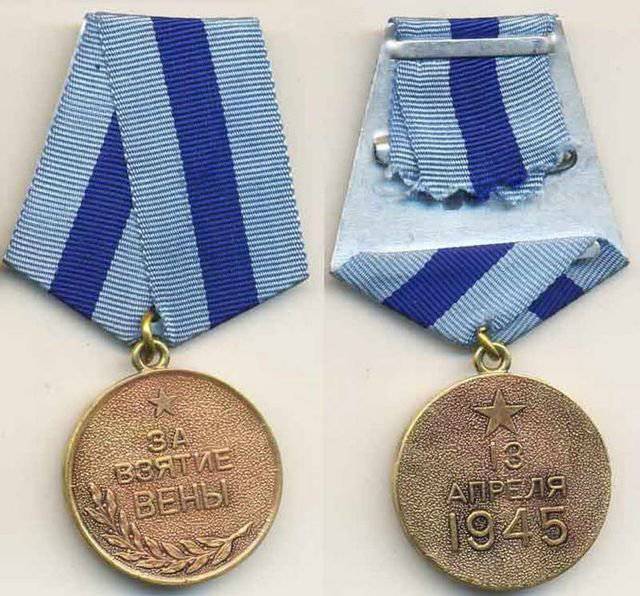
Medal "For the capture of Koenigsberg"
As of 1987 year, the medal "For the capture of Koenigsberg" was awarded the order of 760 000 soldiers and commanders of the Red Army. On the obverse in the center of the award was the inscription “FOR TAKING KENIGSBERG” (all capital letters), in the upper part above the inscription there was a small five-pointed star with rays radiating to the sides, in the lower part a laurel line. On the reverse side of the medal was the date when Koenigsberg was captured (the only city is not the capital) - 10 on April 1945. The medal was attached to a standard pentagonal block. She was covered with a silk ribbon 24 mm wide. The tape itself consisted of five alternating strips of the same width: 2 green and 3 black. The edges of this tape were edged with small green stripes.
Medal "For the Liberation of Prague"
As of 1962, the order “For the Liberation of Prague” was awarded to the order of 395 000 people. The inscription “FOR LIBERATION OF PRAGUE” (all capital letters) was located on the front side in the center of the award, while the inscription “FOR LIBERATION” was arranged in a circle. Below was an image of the rising sun, as well as two laurel branches, which were connected together under a small five-pointed star. On the reverse side of the coin was the date the capture of the capital of Czechoslovakia - 9 of May 1945 of the year. The medal was attached to a standard pentagonal block. It was covered with a silk lilac ribbon 24 mm wide, in the middle of this ribbon was a blue stripe 8 mm wide.
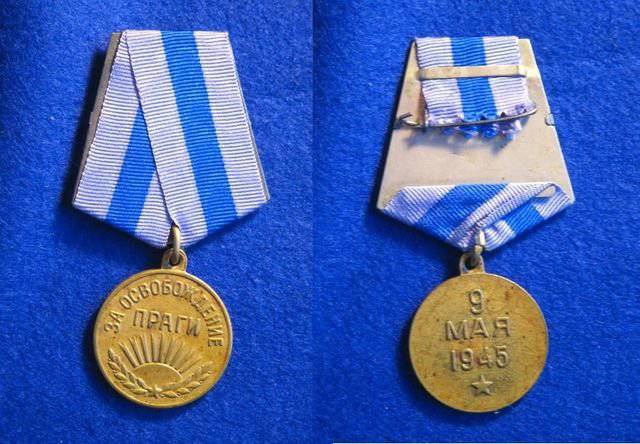
According to information from free sources
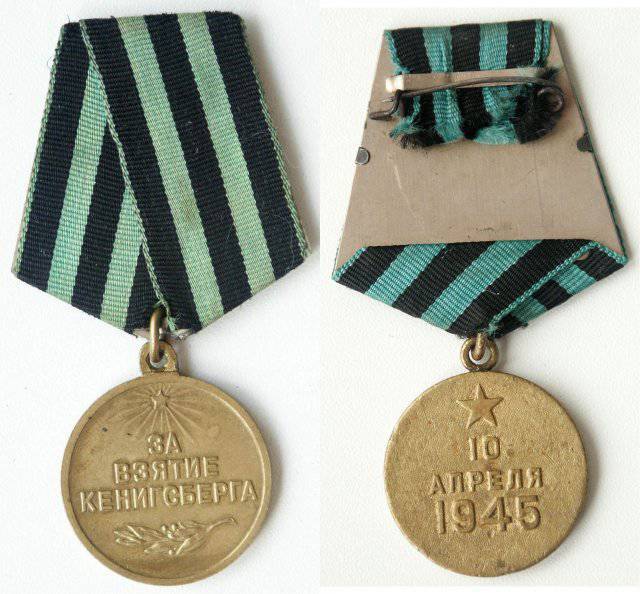
Information